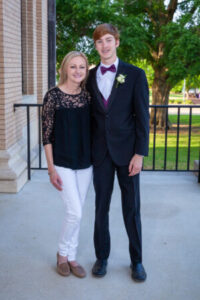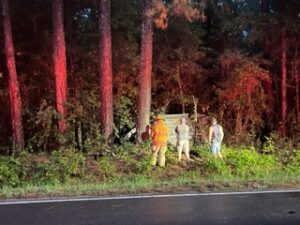After wrapping up Common Threads, a very personal memoir, my goal was to put my artistic energy into fiction writing. I felt that I had said all I needed to about my personal journey. I was eager to dive into creating new characters and chapters, preferably fictional ones that have little to do with my personal life. Nevertheless, each time I sit down to write, the only thing that pours out are the events over the last six months.
Hmmm…back to the old adage, write what you know. Even though I have written my whole life story for all to read (yikes!), each new story requires a fresh level of courage and vulnerability. Breathe in deeply…take a long exhale…..here we go.
My overall goal with Common Threads, is to give hope to two main target audiences: those going through mental health struggles and those loving and working with them. The purpose of this blog series remains the same, with a particular emphasis on Post Traumatic Stress Disorder (PTSD). Sharing the raw truth about my continued struggles with PTSD, while incredibly difficult, serves as a stark reminder for both the therapist and reader alike. While PTSD can be helped tremendously with treatment, we are never truly rid of the long lasting impacts of these traumas on our brain.
As a society we love to see the underdog prevail, hear the rags to riches stories, and use the pull yourself up by the bootstrap’s mentality. While we celebrate these resilient triumphs, we often never know the deep, dark waters our heroine waded through to get to the point of success. Before people can rise from the ashes, there is the endurance of the flames of the fire. When we experience difficult times, we must give ourselves, and others, the permission to feel the emotions required to heal. We can’t just minimize the event, plaster on a smile, and say, “It’s all good”. Ah, but alas, even this veteran therapist looses sight of this in times of crisis.
The Epilogue of Common Threads is what therapists call a future script. After a traumatic event, to create hope, we ask our clients to write how they want to see their future after healing. In my future script I write:
“While my experiences have made me keenly aware that in this life there will be deep sorrow to bear, I know there is also joy to be found.”
This spring, after years in the proverbial desert and feeling zero hope for a future, I was, dare I say, optimistic. I had survived three years of hell and clawed my way out of a pit that I never thought possible, I was hopeful to see a period of sunny days before my next set of trials. In early February, I had already lived out the epilogue of my book by boarding a plane back to Guatemala to do the humanitarian work I love with Unearth Hope.
Yes, this was it, the winds were shifting, and I was adjusting my sails to head boldly into a new phase. Professionally, I was on a high promoting my book and rebranding my speaking and consulting business. I was also engrossed in growing my EMDR therapy skills. This new skill made me feel a passion for therapy that I hadn’t had since I started the profession over twenty years ago. As client after client experienced healing from the most devastating events, I felt that God had truly made beauty from ashes.
In my personal life, I was wading into very uncharted waters, dating post-divorce. Have mercy, single life at almost 50, that will be a book all to itself. After my divorce, I began to search the web for a convent that takes divorced women who have children and who are also not Catholic. I will save you the search, one does not exist. However, stay tuned, I may be opening the Tipsy Nun Convent very soon. We will be praising Jesus while growing grapes and cultivating wine to support our charitable causes. In box me for details.
Yet, even with all the doubts and cynicism, as the universe would have it, I met someone unexpectedly. Someone who could ignore my neurosis, made me laugh, and made me feel that maybe, just maybe, there was life after divorce. Trauma be damned, the only place I planned on seeing trauma again was in my counseling office. Bye bye!
I desperately wanted to believe this truth along with these lyrics from Natalie Grant’s song Our Hope Endures:
You would think only so much can go wrong
Calamity only strikes once
And you assume that this one has suffered her share
Life will be kinder from here.
Oh yes, Natalie, one would think that only so much could go wrong and that life would be kinder from here…sigh. However, per the Book of Melissa, that was not to be the case. If you’ve read my book, you know I’ve made that mistake before, thinking I could just break up with trauma. Note: Melissa, please refer to your own book page 29…
Even though rationally I know there are no limits to the curves life can throw you, I still unconsciously believed there was a formula. After all the battles with family mental illness, losing my parents so early, and years of walking through the wilderness to find the path God was calling me to, I erroneously believed that I had been through my fair share of tests.
No, apparently for me, trauma is like a stalker ex-boyfriend who refuses to go away.
In February of this year, after working a six-day stretch, I decided to give myself a day off from all things work. The self care expert was taking her own advice and making time for her needs. I went to an invigorating yoga class and met some friends after for lunch. However, the yoga glow and ZEN didn’t last long. Just as I was finishing up, I got the call that every parent fears once your kid takes their first solo drive. My daughter who had only had her license for a few months had been in an accident. I arrive at the hospital to find her black and blue and shaken up but thankfully no major injuries. Relief…I could finally exhale.
These are the spaces where the therapist says to herself, “Use your gratitude skills”. I told myself the things that must people would. Cars can be replaced and that her safety was the main thing. Seems like sound advice… well sort of. I adore the work of Brene Brown a psychologist who has done incredible work on the power of vulnerability and empathy. If you have never seen her video on empathy versus sympathy, totally worth your two minutes! Here she shares that no empathetic response should begin with “well at least”. Yet, we do it all the time to ourselves and others. And that is exactly what I did in the days following her accident. At least she was Ok…at least no one else was seriously injured…and so on.
For me, the “well at least” statements and gratitude were quickly replaced by the the financial pressures of being a single mom. Hospital bills quickly rolled in, and I had to replace a totaled car in an economy where inflation was out of control. Oh yes, and the increased premiums of car insurance for a teen driver who now has an accident on her record. No, not even that little annoying insurance gecko could help me out on this one. But, hey I told myself, accidents happen, and “at least” we are all OK.
In May, I watched both of my daughters achieve milestones in their lives. My oldest daughter graduated from her medical lab tech program and started her first big girl job. One baby bird launched, hallelujah! My middle daughter graduated from high school and was headed to college. Meanwhile, my son completed his junior year and was the next on deck to walk through his senior year. These events are always momentous for a parent, but to watch my kids move from surviving to thriving after their lives were shattered, made my eyeballs sweat more than a few times.
Fast forward to late July of this year. I had just retuned home from presenting at a large medical convention where it seemed the entire medical world was finally understanding the impacts of trauma on health. I was exhilarated but also exhausted from an early start that morning and a 3 hour drive home at the end of the day, By eight o clock, I had yoga pants on, hair slung up in a messy bun, and was letting the Zen set in. I could finally relax as it appeared the winds were in my favor, pushing me closer and closer to my new goals and dreams.
Any parent of this generation of teens knows that if your child actually calls you versus sending a text, be prepared, it is definitely serious. Adrenaline is truly a remarkable hormone, and impacts the body at a rapid pace. A phone call from my sixteen year old son has me out of my bed in seconds and pulling shoes on mid flight down the stairs. As I launch out the door and into my car I can hear these lines from my own book in head:
“Fight or flight brain shut down in 3 … 2 … 1. Deploy rational brain crisis counselor mode in 3 … 2 … 1.”Or in this case, deploy “Mama’s got it” mode.
His words echo in my head: Mom… it’s bad, it’s really bad…Mom…Mom…the car is on fire. I didn’t have time to process the true depth of what I had just heard, I just had to get to my kid. I am the first to arrive to the scene of his car crash. He is standing in the center of the road, less than a mile from our house. He was pale, and his face had that distinct look of shock. With the sun setting behind him, the whole scene had an ominous feel like the start of an apocalyptic movie.
As I exit my car, my internal voice switches from my own to my former EMT instructor: Do you have BSI on? Is the scene safe? In the EMS world, this means don your personal protective gear before proceeding to the patient and make sure the area you are about to enter is clear of danger. I can’t tell you how many EMTs “die” during in class trainings because we walk right into situations where we get ourselves shot or mowed down by a car. Well, this is my kid so forget the BSI, but I was concerned about scene safety. Which made me ask him the obvious question… Where is the car?
I follow his hand like Scrooge in A Christmas Carol follows the Ghost of Christmas future as he points to a wooded area. I was most definitely not prepared for what I saw. This crash scene could easily be used as footage in an EMS training or defensive driving class. That was the moment that disassociation set in. Disassociation is an automatic coping mechanism the brain turns on to help us get through traumatic events. We literally drop down from our thinking brain to our animal brain and become physically and mentally numb.
I turn back to look at my son, fully gripping his body but in a panic that he really wasn’t there. My brain could not justify these two images. Looking at that mangled car, he should be dead. Trauma reactions are based on how the brain reads an event and that night my brain read that scene as death. So much so that my brain had convinced me that if I let go of him and walked over to the car, I would find what I feared most to be true. My son was actually not standing before me, but dead.
You can understand biology and how trauma impacts the brain to the highest level, but when it happens to you, the impacts can no more be stopped than you can stop a run away train. Say all the positive statements that you want, smile through the pain, but these responses will eventually come for you. While I was grateful that his life was spared, I had no idea the biological chain of events that had been ignited in my brain. Cradling my son in my arms, I am unaware, that neurochemicals are fast at work. This time “well at least he didn’t die” was not going to stop these biological responses. Like a prison warden unlocking cell after cell, old traumas were being released one by one and setting the stage for a new PTSD battle that I was not prepared to fight.
Don’t miss future blogs! follow me at:
Resiliency Counseling and Consulting, PLLC
Melissa Collins Harrell Author
Read more about Melissa C. Harrell and her work. She is the author of Common Threads: Why the Answers to the Present Lie in the Past.
Photography credits to David Cain of The Cain Gallery
The purpose of this blog is to offer educational information related to mental wellness. Resiliency Counseling & Consulting, PLLC and Melissa Harrell do not offer diagnosis or treatment through this medium. If you feel that you or a family member needs to access mental health services, first contact your primary care physician for assessment and direction in your area. If you need immediate help, please contact the National Suicide Prevention Lifeline at 1-800-273-8255.







